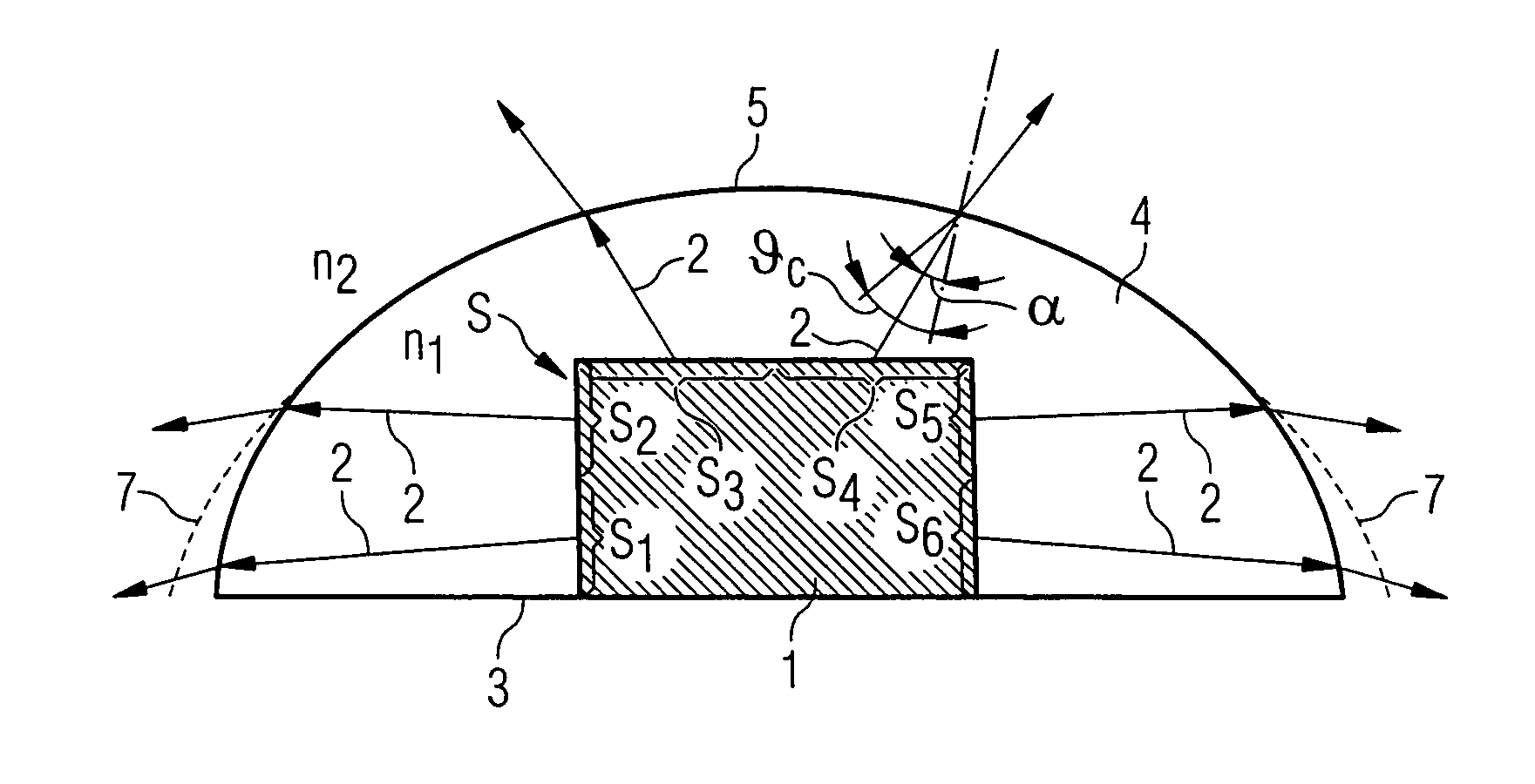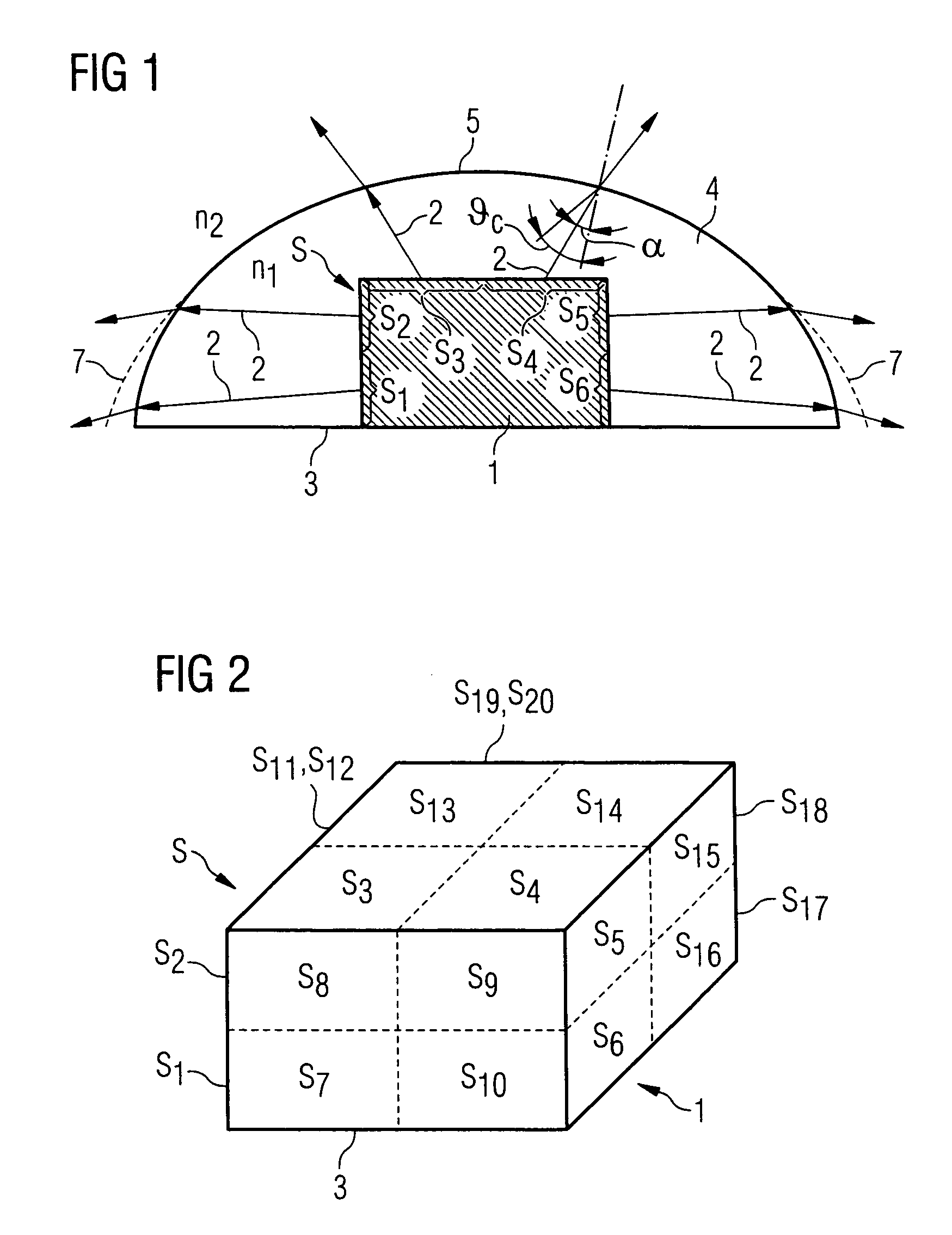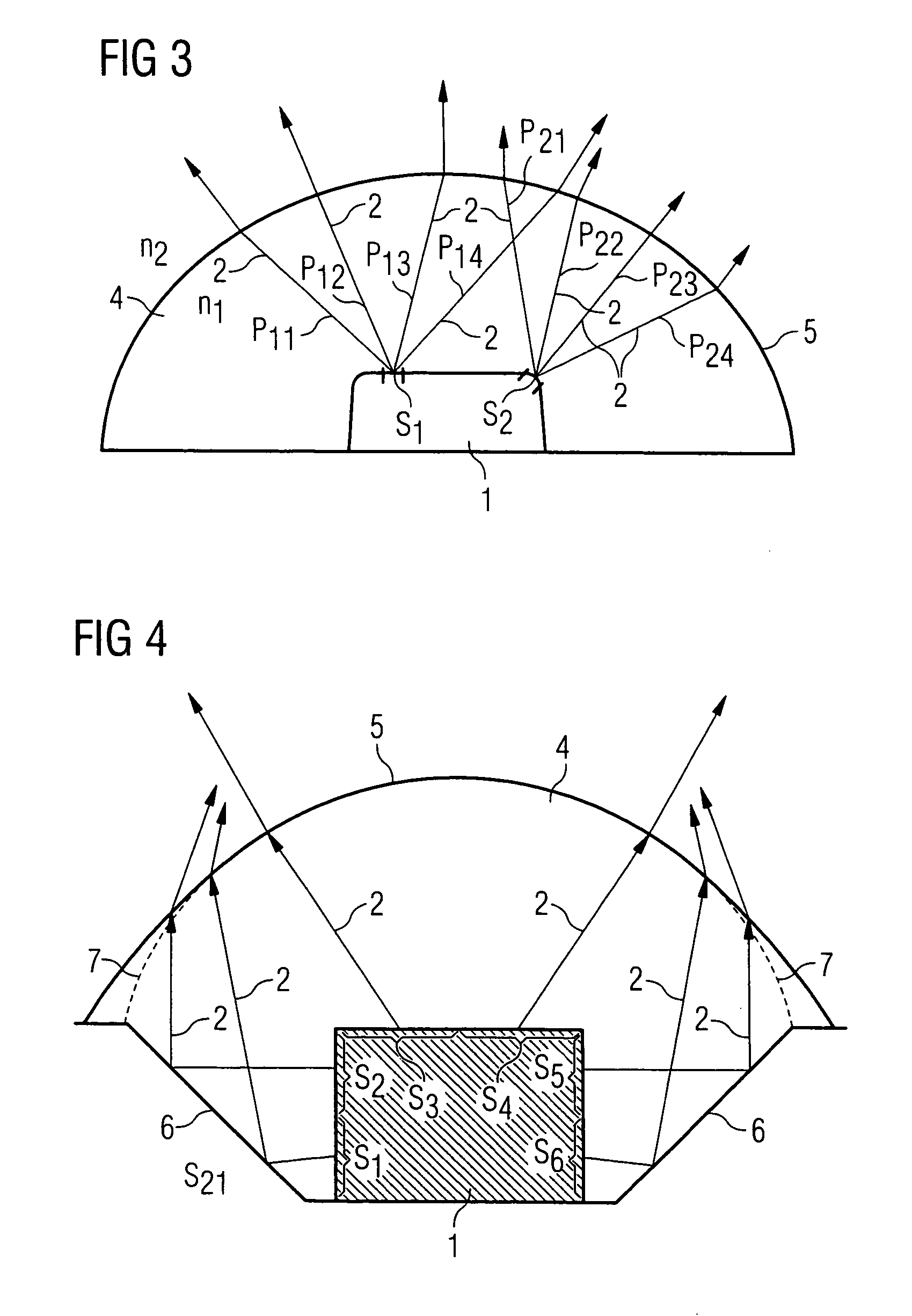Lighting device
a technology of light source and light source, which is applied in the direction of auxillary/base layers of photosensitive materials, instruments, photosensitive materials, etc., can solve the problems of increasing energy consumption, affecting the efficiency of light generation, and a substantial fraction of light generated does not exit the intended decoupling surface, so as to achieve the effect of improving efficiency
- Summary
- Abstract
- Description
- Claims
- Application Information
AI Technical Summary
Benefits of technology
Problems solved by technology
Method used
Image
Examples
Embodiment Construction
[0043]The lighting device depicted in FIG. 1, representing the first embodiment of the invention, comprises a light source 1 in the form of an LED chip that emits incoherent light with a total radiation power P. The radiation-emitting area S of light source 1 is divided into a plurality of subareas S1 to S20. Of these subareas, only subareas S1 to S6 are illustrated in FIG. 1, owing to the sectional view.
[0044]FIG. 2 shows a corresponding light source 1 in the form of an LED chip in perspective representation. The bottom face 3 serves as the mounting face of the LED chip and thus is not a radiation-emitting face. The other five side faces of the approximately cuboid light source make up the radiation-emitting area S of the light source. Each of these side faces is divided into four subareas, so radiation-emitting area S is therefore divided into a total of 20 subareas S1 to S20.
[0045]It should be noted that any other subdivision can also be carried out within the context of the inve...
PUM
 Login to View More
Login to View More Abstract
Description
Claims
Application Information
 Login to View More
Login to View More - R&D
- Intellectual Property
- Life Sciences
- Materials
- Tech Scout
- Unparalleled Data Quality
- Higher Quality Content
- 60% Fewer Hallucinations
Browse by: Latest US Patents, China's latest patents, Technical Efficacy Thesaurus, Application Domain, Technology Topic, Popular Technical Reports.
© 2025 PatSnap. All rights reserved.Legal|Privacy policy|Modern Slavery Act Transparency Statement|Sitemap|About US| Contact US: help@patsnap.com



